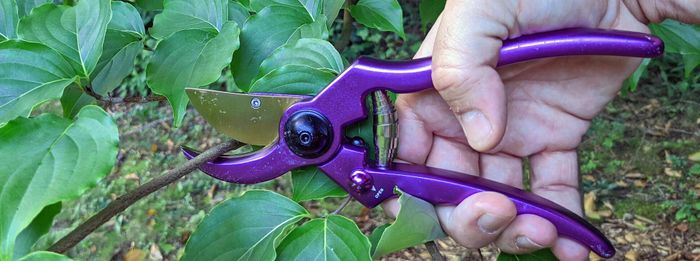How to Prune Firs, Douglas Firs, and Spruces
Control height and encourage fullness by pruning during dormancy
Learn how to prune evergreen single-needle conifers such as spruces, firs, and Douglas firs in this video with Bert Cregg, an associate professor in the horticulture and forestry departments at Michigan State University.
The best time to prune these evergreen trees and shrubs is when they’re dormant—either in late winter or late summer. You can prune to control height or to encourage fullness. Here are a few cuts you may want to make.
Remove competing “leaders”
The first reason to prune is to create a single leader. A leader is the top branch in the tree growth that extends above the other branches and from which later, newer branches will grow. It’s good to trim the tree to have a single leader so that branches do not compete with each other.
Heading back pruning
Heading back pruning is the process of cutting a branch’s “head,” or terminal growth, back to a bud, a stub, or a smaller branch. These cuts enhance the tree’s shape and often produce new growth below the cut. Christmas tree growers often do this in order to give the tree that iconic cone shape.
Fork pruning
For a tree that is growing in your landscape, you may prefer to use fork pruning. This method allows the tree to keep its natural shape but reduces the overall growth to keep the tree compact. Take the pruners into the crotch of the outer branches, and cut one of the forked branches back to the junction point.
Cut back top whorl and terminal leader
Lastly, aim your pruners at the topmost whorl of branches—including your leader. Make heading cuts to these branches to reduce their length back into proportion with the rest of the tree. To do this, find a bud along each branch that is facing out and away from the tree. This ensures that next year’s growth won’t cross back over the tree and compete with established branches. Prune a little bit above each bud, on a 45-degree angle, which promotes better healing of the branch. For your terminal leader, the one that is pointing straight up, pinch off a few of the buds below as well to ensure that there is no competing or forking in future growth.






Comments
Log in or create an account to post a comment.
Sign up Log in